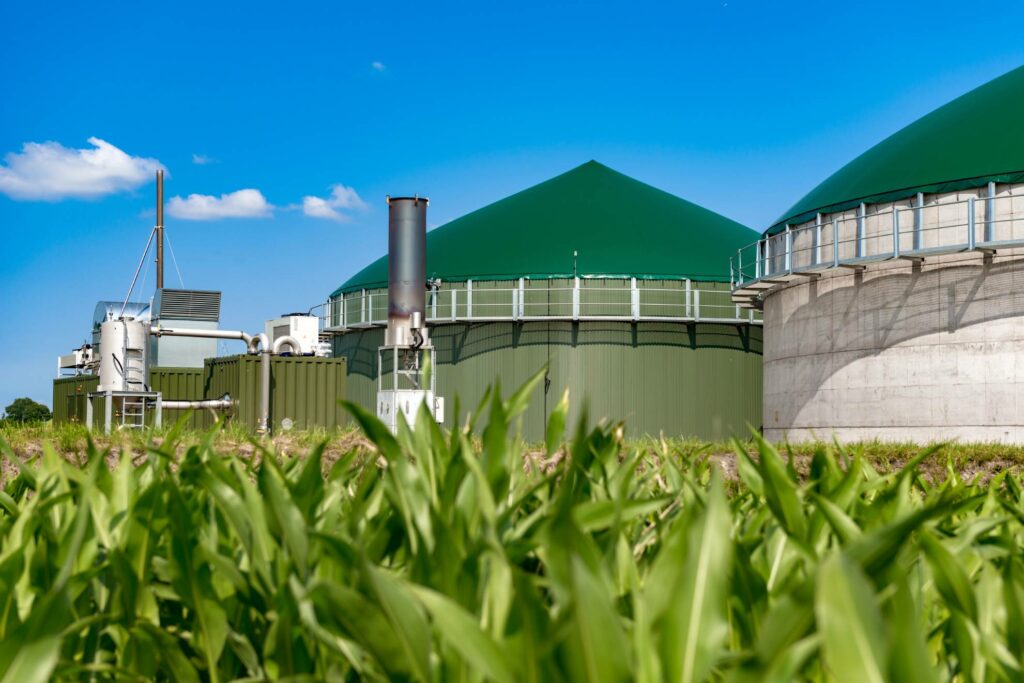Environmental assessment of agricultural methanization: a groundbreaking LCA study
Environmental assessment of agricultural biomethane: a groundbreaking LCA study
Today, the development of renewable gas production in the regions is essentially based on the methanization process, the most mature technology.* To quantify the environmental impact of producing biomethane from agricultural residues, the experts at INRAE Transfert, commissioned by GRDF, have carried out an LCA (Life Cycle Assessment) study.** This unprecedented study, based on the work of several teams of INRAE scientists, compares the impacts of two scenarios, one with anaerobic digestion and the other without, in different agricultural contexts based on mixed farming or livestock farming. Agricultural biomethane production is assessed on the basis of 16 key indicators. The study concludes that the environmental impact of anaerobic digestion is mainly beneficial or neutral, with contrasting results depending on the indicators analyzed. This study lays a solid foundation for the sound environmental management of anaerobic digestion facilities, and answers many of the questions raised in the report by the Senate’s information mission.***

An environmental assessment of the three functions performed by agricultural methanization
Based on a life cycle analysis (LCA), this study presents an overall environmental assessment of agricultural biomethane production, integrating its three associated functions: energy production, effluent management and soil fertilization. Unlike other renewable energy production methods such as photovoltaic or wind power, biogas plants use effluent (pig slurry, cattle manure, other agricultural residues) to produce energy. However, the process modifies their characteristics, so the environmental impact of the digestate produced for soil fertilization must be monitored.
The results of the LCA with anaerobic digestion are compared with the environmental balance of a system without anaerobic digestion, which is equivalent in terms of functions and services. This combines the use of natural gas from the grid, the use of traditional industrial fertilizers and traditional management of effluents on the farm.
16 key indicators, the majority of results in favor of methanization
The methanization scenario shows better performance on 7 indicators for the “crop” scenario and 9 indicators for the “livestock” scenario, in particular an improvement of 60 to 85% for climate change, the depletion of energy resources and the destruction of the ozone layer. For 5 indicators, the differences are not significant. The lower performance on several indicators (in particular ionizing radiation, depletion of metal and mineral resources for both scenarios, and eutrophication of fresh water for the “cultivation” scenario) can be explained in particular by the increased use of electrical energy, which is necessary for the methanization process. A detailed analysis of the results shows that water quality has not deteriorated locally.
Towards a change in farming practices: the role of intermediate energy crops
In addition to the use of crop residues (cereal or oilseed straw, maize residues, beet tops or silo waste), one of the main challenges in developing the methanization sector is the potential for mobilizing intermediate energy crops, sown during the intercropping period between two main crops. The intermediate energy crops studied here (a mixture of immature cereals: triticale, rye and oats, frost-resistant and able to be managed without pesticides) meet complementary ecosystem service objectives, extended to agri-environmental criteria: recycling of mineral elements in the event of digestate return, soil cover (anti-erosion) and nitrate trap, as well as the potentially additional storage of organic matter and carbon in the soil provided by roots, stubble and the return of digestate to the soil.
The development of intermediate energy crops depends on changes in farmers’ practices and future climatic conditions, particularly with regard to the management of water resources if intermediate energy crops needs to be irrigated. The development of intermediate energy crops depends on changes in farmers’ practices and future climatic conditions, particularly with regard to the management of water resources if intermediate energy crops need to be irrigated. With this in mind, methanization could be a lever enabling farmers to adopt new practices in line with the agri-ecological and energy transition.
* Technology compared with pyrogasification and electrolysis-methanation (or power-to-gas) (ADEME, 2018c) ** The study presented meets all the requirements of ISO standards 14040 and 14044 relating to LCA, including a critical review carried out by a panel of independent experts. *** Mission d’information “La méthanization dans le mix énergétique : enjeux et impacts” – chaired by Pierre Cuypers (LR), rapporteur Daniel Salmon (Écologiste-Solidarité et Territoires). Report “Methanizations : au-delà des controverses, quelles perspectives ?” No. 872 (2020-2021) – 29 September 2021.

